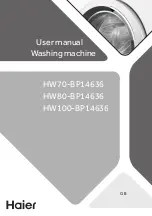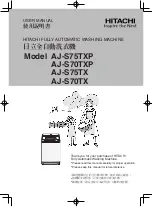Reviews:
No comments
Related manuals for Innov-is 40

KX-FG6550
Brand: Panasonic Pages: 2

12K222
Brand: Singer Pages: 29

GF-207-143
Brand: Garudan Pages: 89

Stylist 533
Brand: Singer Pages: 68

COMBPRO1000
Brand: GBC Pages: 4

Molly BL30A
Brand: Baby Lock Pages: 90

RMV-11002
Brand: illunis Pages: 135

550-19-2
Brand: Duerkopp Adler Pages: 9

253-200
Brand: Singer Pages: 25

Gansow 1250
Brand: IPC Pages: 40

BL9
Brand: Baby Lock Pages: 25

HZL-E71
Brand: JUKI Pages: 72

DDL-8300N
Brand: JUKI Pages: 49

HW100-BP14636
Brand: Haier Pages: 32

AJ-S70TX
Brand: Hitachi Pages: 48

KX-TG6632B
Brand: Panasonic Pages: 2

KX-TG6591T
Brand: Panasonic Pages: 2

KX-TG6581
Brand: Panasonic Pages: 15

















